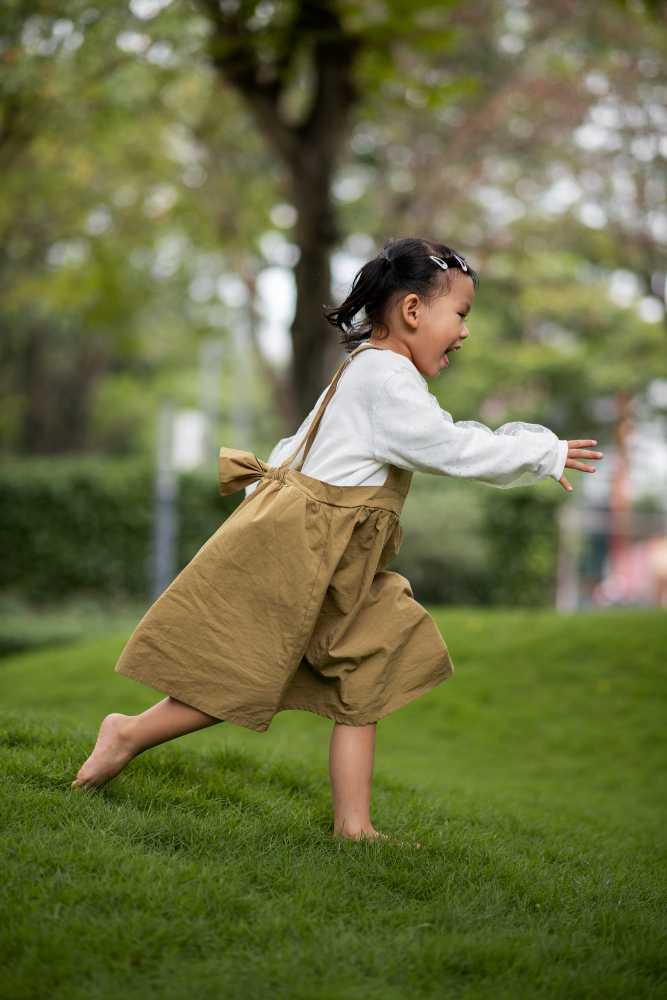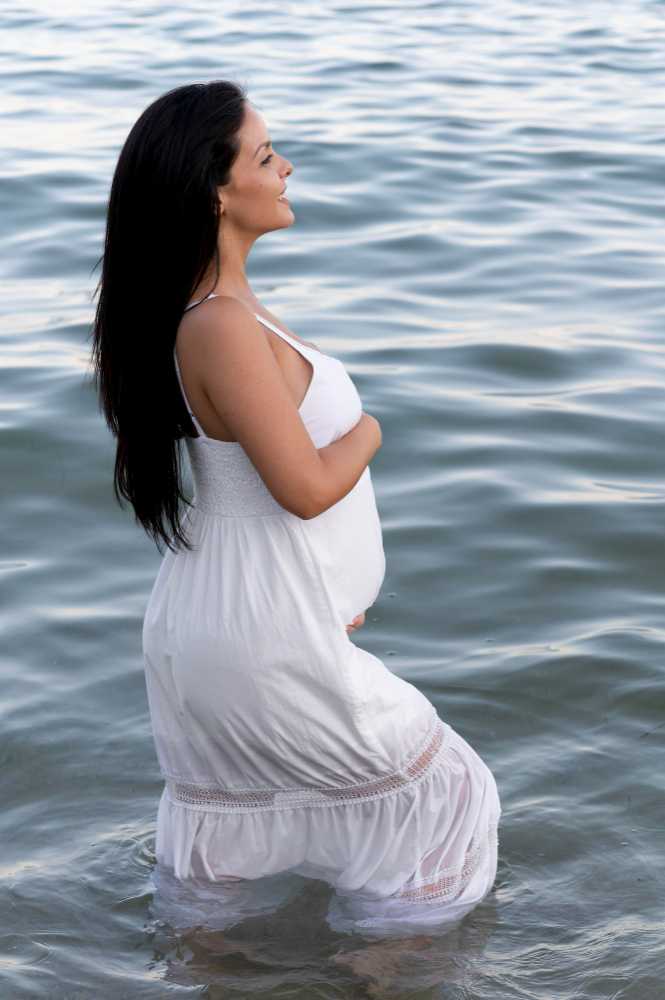Unraveling the Mystery of a Toddler Spinning in Circles

Toddlers are known for their boundless energy and curious exploration of the world around them. One common behavior that often leaves parents puzzled is when their toddler starts spinning in circles. You may probably wonder what goes on in a toddler’s mind when they’re spinning until they become dizzy. The simple action of spinning in circles can also raise concerns about a kid’s development, safety, and well-being.
Below, we’ll look into the phenomenon of toddlers spinning in circles, examining the reasons behind this behavior, its developmental significance, and the potential links to conditions such as autism:
Toddler Spinning in Circles: A Common Behavior
Toddlers, typically between 1 and 3 years, are in a stage of rapid development and exploration. During this phase, they engage in different forms of play and physical activity, including spinning in circles. This act involves the child twirling around, often with arms extended and sometimes with their eyes fixated on something specific.
Why Does My Toddler Spin in Circles?
Parents and caregivers often wonder why toddlers engage in this seemingly repetitive behavior. There are several reasons behind this action:
- Sensory Stimulation: Spinning in circles can provide toddlers with a unique sensory experience. The sensation of dizziness and the change in the way their body feels as they spin can be intriguing to them. It’s a way for them to explore their own bodies and the effects of motion.
- Experimentation: Toddlers are natural scientists, constantly experimenting and observing cause-and-effect relationships. Spinning allows them to test their balance, coordination, and spatial awareness. It helps them learn about their physical abilities and limitations.
- Playfulness: Young children often find joy in simple activities that make them feel playful and lighthearted. Spinning in circles can be a fun and entertaining way for toddlers to express themselves and release pent-up energy.
- Seeking Attention: Sometimes, toddlers spin in circles to seek attention from adults or peers. They may enjoy the reaction they get when others watch them spin, laugh, or clap in response.
- Self-Soothing: For some toddlers, spinning can be a self-soothing mechanism. When they feel overwhelmed or anxious, the repetitive motion of spinning may help them calm down and regulate their emotions.
Toddler Spinning in Circles with Eyes to the Side
It’s not uncommon to observe a toddler spinning in circles with their eyes to the side, seemingly fixated on something in their surroundings. This behavior is usually a natural extension of their curiosity and sensory exploration.
Since toddlers have a developing sense of vision, sometimes, they may use spinning as a way to observe their environment from different angles. Henceforth, they might be trying to focus on a particular object or gain a new perspective on their surroundings as they spin with their eyes to the side. This behavior can be seen as a form of active exploration and learning.
The Developmental Significance of Spinning
While toddler spinning in circles might seem repetitive and unproductive, it actually serves several important developmental purposes:
- Motor Skills Development: Spinning requires coordination, balance, and control over one’s body movements. It helps toddlers improve their motor skills, including gross motor skills (such as balance and coordination) and fine motor skills (like eye-hand coordination).
- Spatial Awareness: Spinning helps toddlers develop a better understanding of space and their own physical boundaries. They learn how to navigate and manipulate their bodies within their environment.
- Sensory Integration: Spinning provides sensory input, which can be beneficial for sensory integration—the process of the brain organizing and making sense of sensory information. This can help with a child’s overall sensory development.
- Cognitive Exploration: As mentioned earlier, spinning is a form of experimentation for toddlers. They learn about physics, cause-and-effect relationships, and the consequences of their actions through this playful activity.
- Emotional Regulation: Spinning can help toddlers regulate their emotions, serving as a coping mechanism when feeling excited, anxious, or overwhelmed. The sensation of spinning may have a calming effect on some children.
Toddler Spinning and Autism
Addressing the concerns parents may have about a toddler spinning in circles and its potential connection to autism is crucial. Autism is a complex neurodevelopmental condition characterized by challenges in communication, social interaction, and repetitive behaviors. While spinning can be a repetitive behavior, distinguishing between normal toddler behavior and potential signs of autism is paramount.
Spinning as a Red Flag for Autism
Children with autism often engage in repetitive behaviors, known as “stimming” or self-stimulatory behavior, including hand-flapping, rocking back and forth, and spinning in circles. However, not all children who spin in circles have autism.
Differentiating Between Typical Behavior and Autism
To differentiate between typical toddler behavior and signs of autism, considering other aspects of a child’s development is essential. These include:
- Social Interaction: Kids with autism typically struggle with social interaction, for instance, making eye contact, responding to their name, and engaging in reciprocal play. If your child exhibits challenges in these areas in addition to spinning, it might be a cause for concern.
- Communication: Delayed or atypical language development is a hallmark of autism. If your child is not meeting language milestones or displays significant communication difficulties, it’s essential to seek professional evaluation.
- Repetitive Behaviors: While spinning can be a repetitive behavior, it should be assessed in the context of other repetitive actions and behaviors. If your child exhibits a range of repetitive behaviors, it may warrant further evaluation.
- Developmental Milestones: Children with autism may show delays in reaching developmental milestones, such as walking, talking, and potty training. Therefore, consider tracking your kid’s developmental progress for early detection.
Additionally, don’t hesitate to seek professional evaluation whenever you have concerns about your kid’s development. Developmental specialists will conduct assessments to determine whether your kid exhibits signs of autism or other developmental disorders. Early intervention is key in providing the necessary support and therapies if autism is diagnosed.
Cons of Toddler Spinning in Circles Too Much
Although some degree of spinning is normal for many children, as it can serve as a sensory-seeking or self-soothing behavior, doing it excessively can have several negative consequences, including:
- Physical Safety Concerns: Excessive spinning can pose physical safety risks for kids. They may lose balance or collide with objects, leading to bumps, bruises, or more severe injuries.
- Neglect of Other Activities: When a child spins excessively, they might become fixated on this behavior, neglecting other essential activities such as playing with toys, interacting with peers, or engaging in educational activities. This can hinder their overall development and socialization skills.
- Potential for Dizziness and Discomfort: Too much spinning can lead to feelings of dizziness and discomfort. While mild sensory stimulation can be beneficial, excessive spinning may overwhelm a child’s sensory system, leading to distress and anxiety.
Striking a balance between allowing toddlers to explore their sensory experiences through spinning and ensuring that it doesn’t interfere with their safety, development, or overall well-being is crucial.
Managing Healthy Toddler Spinning Behavior: Tips for Parents
Toddler spinning in circles is a common behavior that often raises questions among parents. While this behavior is typically harmless and even developmentally beneficial, it’s essential for parents to know how to manage it effectively. Here are some tips to help you navigate and promote healthy toddler spinning behavior while addressing concerns related to autism:
- Understanding the Behavior: Educate yourself about why toddlers spin in circles. Recognize that it’s often a natural part of their developmental exploration and sensory stimulation.
- Create a Safe Environment: Ensure that the space in which your toddler spins is safe and free from hazards. Remove sharp objects, tripping hazards, and fragile items from their spinning area.
- Engage in Supervised Play: Encourage and join in on their spinning playtime. This provides an opportunity for bonding and ensures they are spinning in a controlled and supervised environment.
- Offer Alternatives: Provide a variety of play activities that offer similar sensory experiences. Activities like swinging, spinning on a playground carousel, or dancing can be enjoyable alternatives. Encourage healthy alternatives and gently redirect if spinning becomes excessive.
- Set Time Limits: While spinning can be fun and beneficial, set reasonable time limits to ensure that your toddler engages in a balanced range of activities throughout the day.
- Seek Professional Guidance if Concerned: If you have significant concerns about your toddler’s development, especially in conjunction with spinning behavior, consult with a pediatrician or developmental specialist for an evaluation.
- Be Patient and Supportive: Remember that spinning is a phase for many toddlers, and it often diminishes as they grow. Be patient, supportive, and understanding of your child’s unique developmental journey.
In summary, toddlers spinning in circles is a common behavior that usually reflects a child’s natural curiosity and developmental exploration. By understanding the reasons behind this behavior and implementing these tips, parents can effectively manage and encourage healthy spinning behavior while addressing concerns related to autism or other developmental issues.
Conclusion
Toddler spinning in circles is a common and generally harmless behavior that often reflects their natural curiosity, playfulness, and developmental needs. While a toddler spinning in circles may occasionally raise concerns about autism, you should consider it in the context of a child’s overall development, including social interaction, communication skills, and other repetitive behaviors.
Understanding the reasons behind this behavior and its developmental significance can help parents and caregivers navigate this phase of a child’s growth. If there are concerns about a child’s development, seeking professional guidance and evaluation is always recommended to ensure early intervention and appropriate support if needed. In most cases, however, toddlers spinning in circles are simply embracing their innate curiosity and zest for exploration as they continue to grow and learn.





